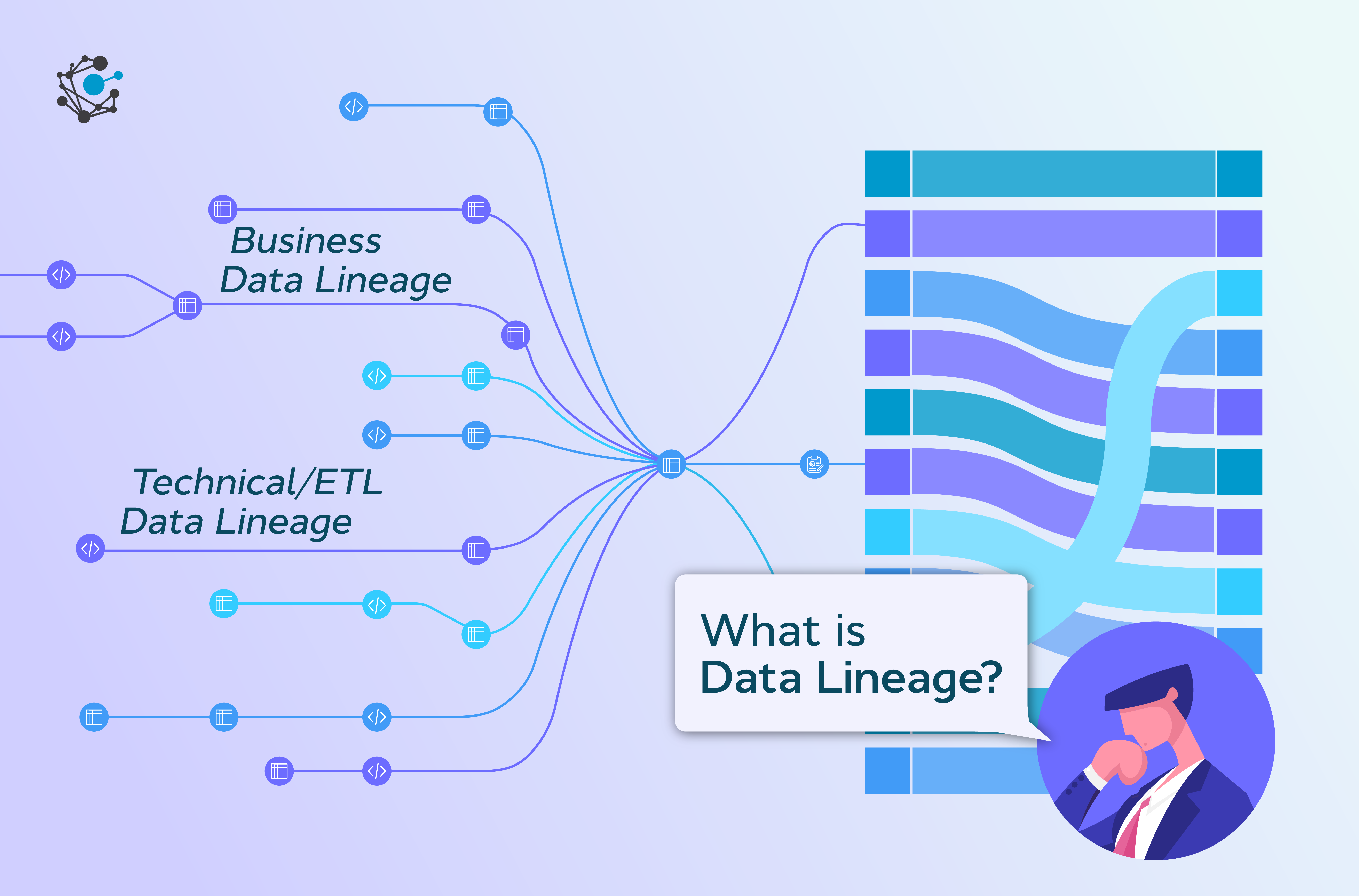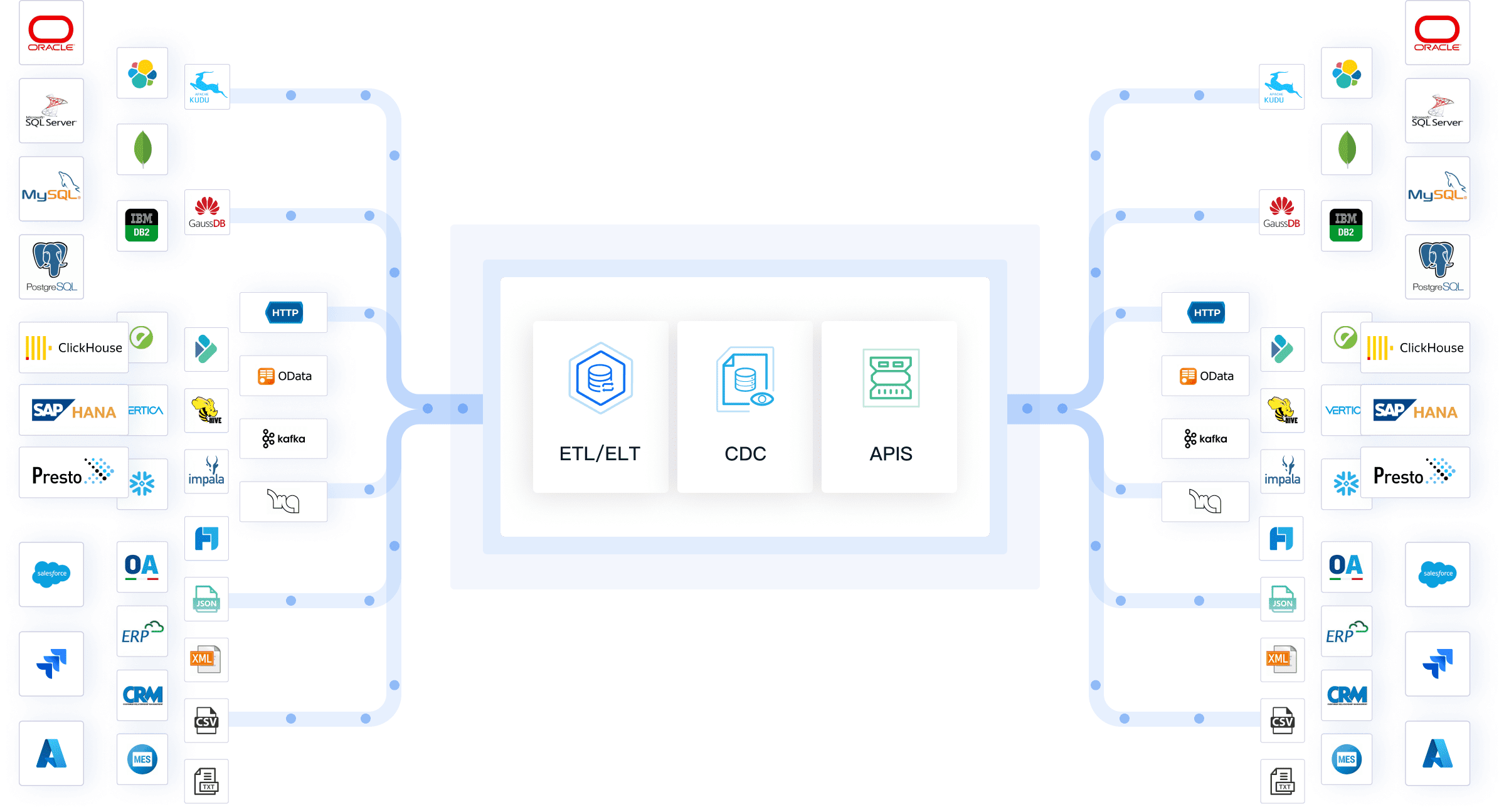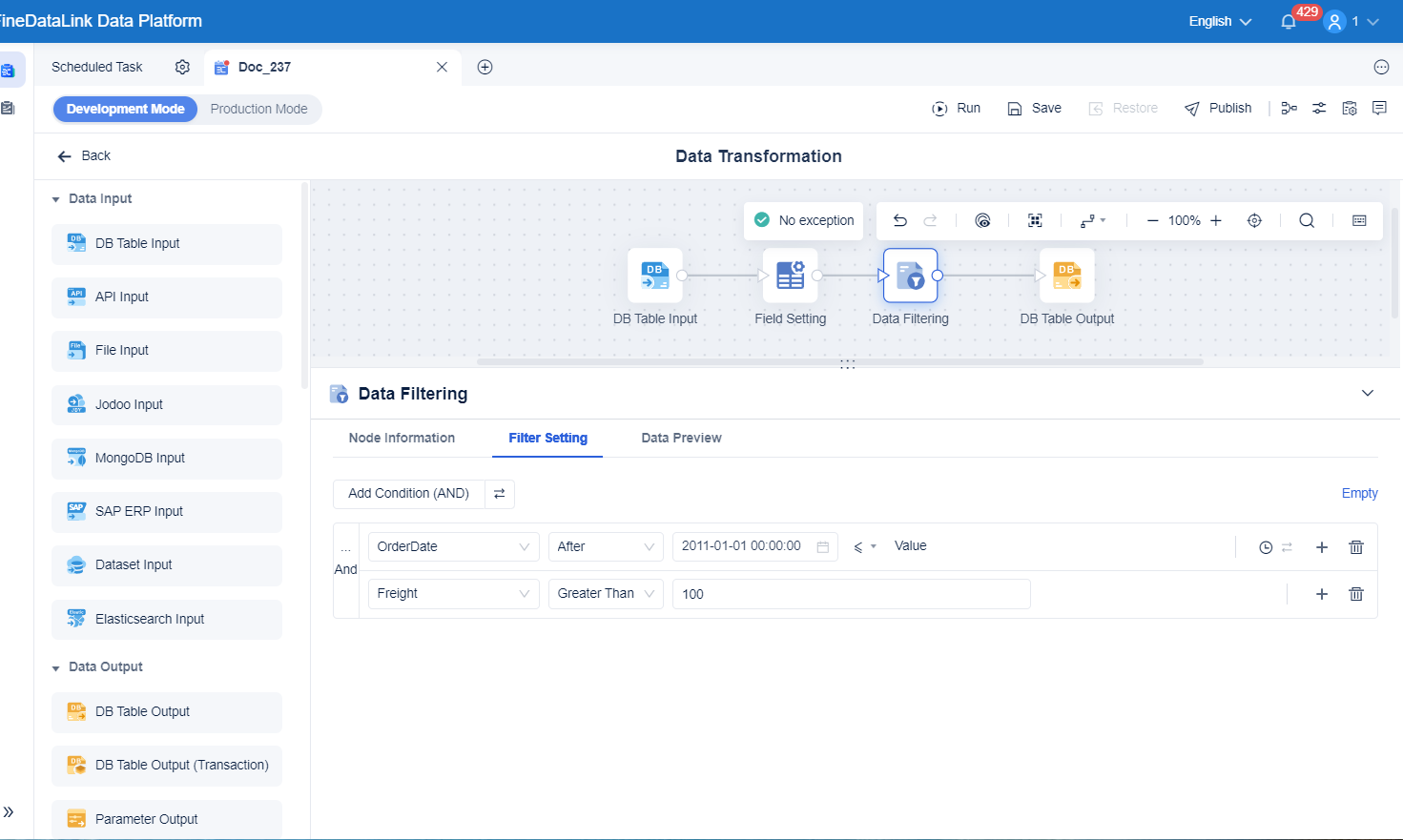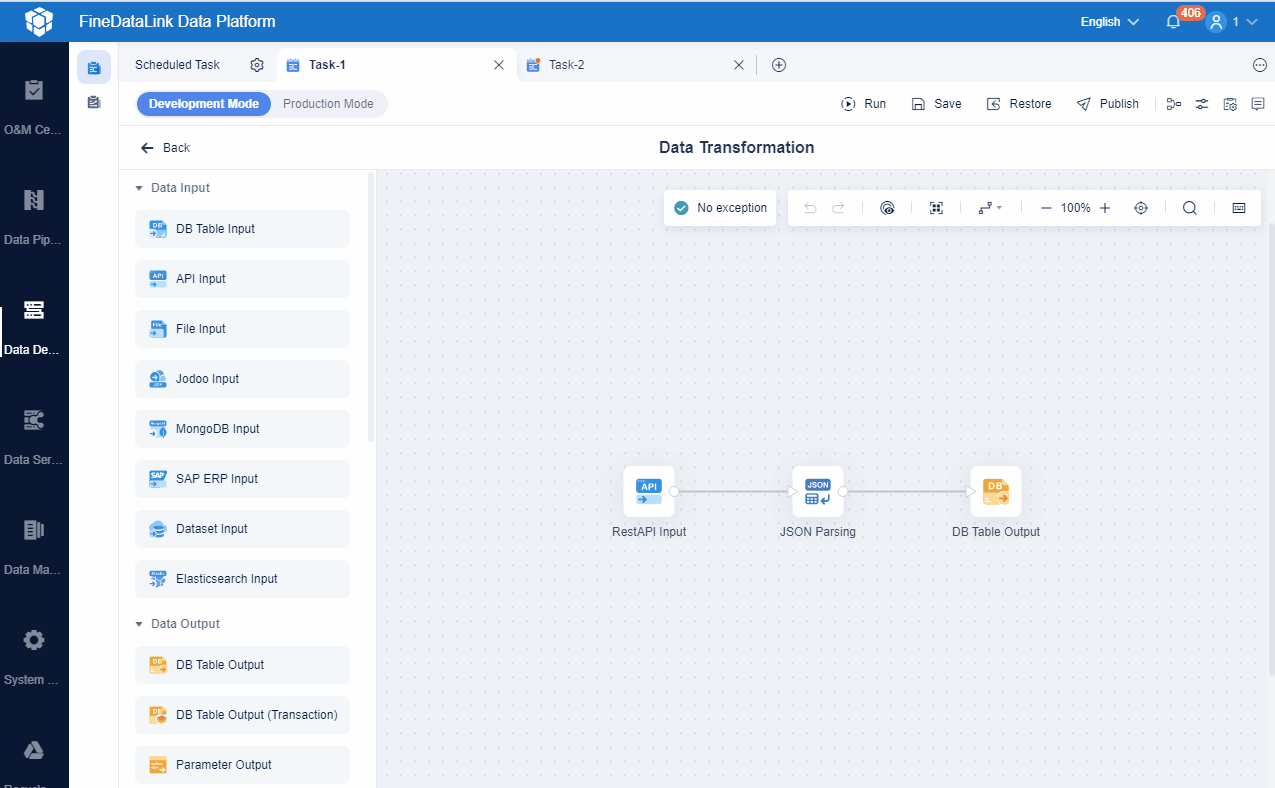You have many options when exploring data lineage tools, such as FineDataLink, Collibra, Informatica Enterprise Data Catalog, Microsoft Purview, Alation, Manta, OpenMetadata, Apache Atlas, and DataHub. Each tool stands out for specific strengths:
- Collibra offers strong governance and AI-powered metadata enrichment.
- Alation focuses on collaboration and easy search.
- Informatica Enterprise Data Catalog excels in deep lineage tracking.
- Microsoft Purview integrates smoothly with Azure.
- DataHub supports open-source flexibility and broad connectivity.
Understanding these features helps you improve data quality, strengthen compliance, and reduce risks. The table below highlights how advanced data lineage tools impact key aspects of data management:
| Aspect | Description |
|---|---|
| Data Quality | Transparency and accountability drive better data quality. |
| Compliance | Supports regulatory needs such as GDPR and HIPAA. |
| Proactive Problem-Solving | Moves your organization from reactive to proactive data governance. |
| Risk Reduction | Quicker issue resolution lowers the chance of non-compliance. |
Why Data Lineage Tools Matters

Business Value of Data Lineage
You need to understand how data lineage tools can transform your business operations. These tools give you a clear view of how data moves and changes across your systems. When you know where your data comes from and how it flows, you can make better decisions and respond quickly to changes.
Data lineage helps you see the full story behind your data. This visibility supports smarter planning and faster problem-solving.
Here are some of the most commonly cited business benefits of using data lineage tools:
| Benefit | Description |
|---|---|
| Proactive Impact Assessment | Understand the impact of data changes on business operations, such as sales forecasts and migrations. |
| Faster Root Cause Analysis | Quickly identify and resolve data quality issues, reducing operational disruptions. |
| Optimized Resource Allocation | Analyze data usage to improve efficiency and focus on critical data assets. |
| Stronger Data Governance | Enhance governance processes by improving visibility and policy refinement. |
| Automatic Data Quality | Maintain high data quality throughout its lifecycle, ensuring accurate and up-to-date information. |
| Improved Data Compliance | Stay compliant with evolving data privacy laws through detailed tracking of data evolution. |
| Auditing | Provide a chronological trail of data usage for compliance and audit readiness. |
You can use these benefits to drive efficiency, reduce costs, and support your business goals.
Impact on Compliance and Governance
Data lineage tools play a key role in helping you meet regulatory requirements and strengthen your data governance efforts. You must show regulators and auditors exactly how your data is handled. Data lineage gives you the transparency and traceability you need.
| Contribution to Compliance and Governance | Description |
|---|---|
| Transparency and Traceability | Data lineage provides a clear record of data's journey, essential for audits and compliance. |
| Documentation of Data Handling Protocols | Helps in demonstrating adherence to data standards and facilitates audits. |
| Identification of Compliance Risks | Proactively identifies potential risks related to data handling and compliance. |
| Facilitation of Audits | Tracing the origin of data aids in regulatory reporting and compliance. |
| Adherence to Data Privacy Regulations | Ensures that data handling complies with privacy and security regulations. |
| Risk Mitigation | Transparency helps in identifying and mitigating compliance risks. |
When you use data lineage tools, you make it easier to prepare for audits and prove compliance. You also reduce the risk of data breaches and regulatory penalties. This approach builds trust with customers and partners, showing that you take data management seriously.

Essential Features in Data Lineage Tools
Automated Data Discovery
You need automated data discovery to keep up with the growing complexity of your data landscape. Leading data lineage tools use advanced technologies like data profiling, code instrumentation, and machine learning. These features help you identify and catalog data assets quickly. When you automate discovery, you improve data governance and data quality. Your teams work more efficiently and collaborate better because everyone can find the data they need. Automated documentation also supports compliance, making audits easier and reducing manual effort.
Automated data discovery saves time and ensures your data assets stay organized and up to date.
Visualization and Mapping
Clear visualization and mapping features help you understand how data flows through your systems. Top data lineage tools offer interactive graphs, drag-and-drop interfaces, and detailed relationship diagrams. These visual tools make it easy for you to trace data movement, spot issues, and analyze impacts. For example, some platforms provide one-click impact analysis and business-friendly lineage views. These features increase user adoption and satisfaction because you can see the full picture at a glance.
| Tool Name | Key Visualization and Mapping Features |
|---|---|
| Secoda | Automated end-to-end column-level lineage, drag-and-drop visual graphs, interactive ERDs |
| Informatica Metadata Manager | Detailed lineage tracking, impact analysis, multi-cloud integration |
| Alation | Interactive lineage visualizations, business lineage for accessibility |
Integration Capabilities
You need strong integration capabilities to connect your data lineage tools with various platforms and data sources. The best solutions support a wide range of connectors, APIs, and hybrid deployments. This flexibility lets you track data across cloud, on-premises, and SaaS environments. Some tools offer hundreds of connectors and support both field-level and table-level lineage. Others focus on deep metadata cataloging or low-code integration for faster deployment. Seamless integration ensures you can scale your data management as your organization grows.
| Tool | Key Features |
|---|---|
| Airbyte | 600+ connectors, field-level lineage, security-first design |
| Fivetran | Table-level lineage, limited custom connectors |
| Informatica | Deep metadata catalog, AI-powered lineage, strong RBAC |
| Collibra | Overlay tool for lineage extraction, automated SQL parsing |
| Hevo Data | 150+ connectors, basic table-level lineage |
When you choose a data lineage tool, look for features like master data management, end-to-end visibility, streamlined mapping, and customizability. These features help you meet your unique business needs.

Data Lineage Granularity
You need to understand the level of detail that data lineage tools provide. Granularity describes how deeply you can trace your data’s journey. Some tools track data at the column level, showing every transformation and movement. Others focus on table-level lineage, giving you a broader view of business processes. Analytical granularity combines both, helping you see technical and business perspectives together.
| Type of Lineage | Granularity Level | Description |
|---|---|---|
| Technical Lineage | Column-level | Tracks detailed data flow, including system interactions and transformations. |
| Business Lineage | Table-level | Maps data by its business role and decision impact. |
| Interconnection | Analytical | Combines both levels for a complete picture. |
FineDataLink and other leading platforms offer both column-level and table-level lineage. This flexibility helps you improve data quality and supports compliance efforts.

Collaboration and User Access
Effective teamwork depends on how well your data lineage tools support collaboration. You want a platform that integrates with your existing data stack and remains easy for everyone to use. Both technical and non-technical users should access and understand lineage information. This approach empowers your team to make informed decisions and work efficiently.
| Feature | Description |
|---|---|
| Integration capabilities | Connects with your current data systems for complete lineage capture. |
| Usability and accessibility | Designed for all users, not just IT professionals. |
| Support for data-driven decisions | Helps your team use data assets wisely. |
| Operational efficiency | Automates mapping, saving time and resources. |
Tip: Choose a tool that encourages collaboration and supports your workflow. This choice leads to better results and faster insights.
Security and Privacy Controls
You must protect sensitive information and comply with regulations like GDPR and HIPAA. Data lineage tools help you achieve this by mapping data flows without exposing private details. These tools use active metadata to show how data moves, which supports secure information sharing. A clear map of your data environment makes it easier to meet strict regulatory requirements and avoid risks.
- Data lineage tools help you follow healthcare and privacy laws.
- These tools improve security by mapping data without processing private information.
- A detailed data flow map supports compliance and secure sharing.
Note: Strong security and privacy controls build trust with customers and regulators.
Overview of Leading Data Lineage Tools

You have many choices when it comes to data lineage tools. Each tool offers unique features and serves different types of organizations. In this section, you will learn about three leading solutions: FineDataLink, Collibra, and Informatica Enterprise Data Catalog. Understanding their strengths helps you select the right platform for your data management needs.
FineDataLink
FineDataLink stands out as a modern data integration platform designed for organizations that need to manage and synchronize data across multiple sources. You can use FineDataLink to build both real-time and offline data warehouses. The platform supports real-time data synchronization, advanced ETL and ELT development, and API integration. Its low-code interface allows you to create data pipelines quickly, even if you do not have deep technical skills.

You benefit from a visual, drag-and-drop interface that makes deployment and operation simple. FineDataLink connects with over 100 common data sources, so you can integrate data from various systems without hassle. The platform supports real-time synchronization of single tables, multiple tables, or even entire databases. In one task, you can select up to 5,000 tables for synchronization, which is ideal for large-scale enterprise environments.
FineDataLink targets data engineers, business intelligence teams, and data governance professionals. You can use it to break down data silos, automate data integration workflows, and improve data quality. The platform also offers detailed documentation and step-by-step instructional videos, making it easy for your team to get started.
| Core Features | Description |
|---|---|
| Real-time Data Synchronization | Sync data across multiple tables and databases with minimal latency |
| Low-code ETL/ELT Development | Build and manage data pipelines using a visual interface |
| API Integration | Create and deploy APIs in minutes for seamless data sharing |
| Broad Connectivity | Integrate with 100+ data sources, including SaaS and cloud environments |
| Scalability | Handle large volumes of data and complex integration scenarios |
FineDataLink uses a flexible pricing model and offers a free trial, so you can evaluate its capabilities before making a commitment.
Collibra
Collibra is a well-known platform in the world of data lineage tools, especially for organizations in regulated industries like finance and healthcare. You can use Collibra to automate data lineage extraction, manage governance workflows, and enforce data policies across your organization. The platform provides both technical and business lineage views, so you can see how data moves and transforms from source to destination.
Collibra integrates with various ETL tools and governance frameworks. You can track data usage, monitor transformations, and classify sensitive information. The platform supports manual and automated classification, which helps you comply with regulations such as GDPR and CCPA. Collibra also allows you to create and manage policies for different organizational units, making it easier to maintain compliance.
| Feature | Description |
|---|---|
| Automated Data Lineage | Extract lineage from ETL tools and visualize end-to-end data journeys |
| Governance Workflows | Streamline policy management and compliance processes |
| Technical and Business Views | Provide detailed graphs for technical users and simplified views for business users |
| Data Privacy and Classification | Support for sensitive data identification and regulatory compliance |
| Integration Options | Connect with governance frameworks and enterprise data systems |
Collibra targets large enterprises and organizations with strict compliance requirements. You will find it especially useful if you need to manage complex governance workflows and ensure data quality across multiple domains.
Informatica Enterprise Data Catalog
Informatica Enterprise Data Catalog is a powerful solution for large enterprises that require deep data governance and cataloging capabilities. You can use Informatica to discover, classify, and manage data assets across your organization. The platform uses the CLAIRE AI engine to automate data classification and provide real-time data quality scorecards.
You benefit from automated scans of various data sources, which helps you maintain an up-to-date inventory of your data assets. Informatica offers detailed lineage tracking, so you can see how data flows through your systems and identify potential issues quickly. The platform supports integration with cloud and on-premises environments, making it suitable for hybrid deployments.
| Core Features | Description |
|---|---|
| CLAIRE AI Engine | Automate data classification and quality assessment |
| Real-time Data Quality | Monitor and score data quality in real time |
| Deep Lineage Tracking | Visualize data movement and transformations across systems |
| Automated Scans | Discover and catalog data assets from multiple sources |
| Hybrid Integration | Support for both cloud and on-premises environments |
Informatica Enterprise Data Catalog is best suited for organizations with dedicated data governance teams. You will find it valuable if you need comprehensive data cataloging, automated quality checks, and detailed lineage analysis.
Tip: When you compare these data lineage tools, focus on your organization’s size, regulatory needs, and integration requirements. Each tool offers unique strengths that can help you achieve better data governance and compliance.
Microsoft Purview
Microsoft Purview gives you a unified approach to data governance. You can manage, discover, and track your data across different environments. This tool works well if your organization uses both cloud and on-premises systems. You get a single platform to handle data cataloging, classification, and lineage.
- Unified governance capabilities help you manage all your data assets in one place.
- Integration with multi-cloud environments lets you track data wherever it lives.
- Emphasis on compliance and ethical data stewardship ensures you meet regulatory standards.
With Microsoft Purview, you can track where data flows and map data lineage.
You can use Purview to automate the discovery of data sources. The platform provides visual lineage maps, so you see how data moves from source to destination. You also get built-in tools for managing sensitive data and enforcing privacy policies. If your business needs to meet strict compliance requirements, Purview offers features that make audits and reporting easier.
Alation
Alation focuses on making data easy to find and understand. You can use Alation to search, catalog, and track your data assets. The platform stands out for its user-friendly interface and strong collaboration features. Both technical and non-technical users can benefit from Alation’s clear visualizations.
| Feature | Description |
|---|---|
| Visual Mapping of Data Flows | Alation visually maps how data flows through systems, providing a clear view of data lineage. |
| Tracking Data Transformations | It tracks how data is transformed, ensuring users understand the context and quality of data. |
| Compliance and Governance | Ensures compliance with security and regulatory requirements by providing complete visibility. |
You can use Alation to see how data changes as it moves through your systems. The platform helps you understand the context behind your data, which improves trust and quality. Alation also supports compliance by giving you full visibility into data usage and transformations. If your team values collaboration and easy access to data, Alation is a strong choice.
Manta
Manta specializes in automated, real-time data lineage. You can use Manta to visualize how data moves from source to target, even at the column level. The platform started as a code analytics tool, so it excels at analyzing complex data pipelines and transformations.
Manta started as a code analytics tool for helping with code standardization. And it became very clear that in the work that we're doing there, being able to lace together, you know, column to column, source to target types of pictures and streaming with edges for connecting lineage and all the different nodes was something that we could make use of in this growing governance space.
You will find Manta especially useful if you work in industries like finance, healthcare, or telecommunications. These sectors often require detailed tracking of data flows for compliance and auditing. Manta’s real-time lineage maps help you quickly identify issues and understand the impact of changes. The platform supports integration with many data sources and tools, making it flexible for different environments.
If you need to automate lineage tracking and gain deep visibility into your data pipelines, Manta offers a powerful solution. You can use it to improve data quality, support governance, and streamline compliance efforts.
OpenMetadata
You can use OpenMetadata if you want a flexible and open-source solution for tracking data lineage. This platform helps you understand how data moves and changes across your systems. OpenMetadata supports both table-level and column-level lineage, which means you can see not only where your data comes from but also how each column transforms along the way. You get strong integration with popular data sources, such as BigQuery, Snowflake, Redshift, and Databricks. This makes it easier to connect your existing tools and keep your metadata up to date.
OpenMetadata also lets you extract lineage information from query logs. The built-in SQL parser reads these logs and builds a detailed map of your data flows. This approach helps you automate lineage tracking and reduces manual work. If you work in a team, you will appreciate the active open-source community. You can find support, share ideas, and contribute to new features.
Here is a quick overview of OpenMetadata’s capabilities:
| Capability | Description |
|---|---|
| Table and Column-Level Lineage | Track lineage at both table and column levels for different data sources. |
| Data Source Integration | Connect to BigQuery, Snowflake, Redshift, Databricks, and more. |
| Query Logs | Extract lineage metadata from query logs using the SQL parser. |
Tip: OpenMetadata’s open-source nature means you can customize it to fit your needs and benefit from community-driven improvements.
Apache Atlas
Apache Atlas gives you a robust framework for managing metadata and data lineage, especially if you use Hadoop or cloud-native data platforms. You can adapt Atlas to your organization without worrying about licensing costs. The platform integrates seamlessly with Hadoop components like Hive, HDFS, and Spark. This makes it a strong choice for organizations that rely on big data technologies.
You get a centralized approach to metadata and governance. Atlas lets you manage data assets, track lineage, and enforce policies from a single place. You can use tag-based policy management to control access and ensure compliance. The platform supports fine-grained lineage tracking, so you can see how data moves through each part of your Hadoop ecosystem.
Here is a summary of Apache Atlas strengths:
| Strengths | Description |
|---|---|
| Open-source and highly flexible | Adapt Atlas to your needs without licensing fees. |
| Integrates well with Hadoop, Hive, HDFS, and Spark | Connect easily with key Hadoop components. |
| Centralized metadata and governance | Manage all your metadata and governance tasks in one place. |
You will also benefit from these features:
- Mature governance framework with years of production use
- Fine-grained lineage tracking across Hadoop components
- Tag-based policy management for flexible access control
- Strong integration with Hive, HBase, and other Apache tools
Note: Apache Atlas works best if you need to manage large-scale data environments and want a proven, open-source solution.
DataHub
DataHub helps you manage metadata and track data lineage in large-scale data ecosystems. You can use DataHub to store and ingest lineage information using a YAML-based file format. This makes it easy to bring in data from different platforms and keep your lineage records organized. The latest version of DataHub supports column-level lineage, which is important if you want to understand how each piece of data changes during processing.
DataHub automatically detects both table-level and column-level lineage from a wide range of data tools. You can integrate it with over 20 modern data platforms, so you get a complete view of your data flows. The built-in SQL parser achieves high accuracy, with 97–99% precision in lineage detection. This gives you confidence in the quality of your lineage graphs.
You will find these features especially useful:
- YAML-based file format for easy lineage storage and ingestion
- Automatic detection of table- and column-level lineage from many data tools
- Integration with more than 20 modern data platforms
- High-accuracy SQL parser for reliable lineage graphs
- Column-level lineage highly valued by the DataHub community
Understanding data lineage is critical when you manage code changes that could affect data processing. DataHub’s strong community support and frequent updates make it a reliable choice for organizations that need scalable metadata management.
Tip: If you want a tool that grows with your data ecosystem and offers detailed lineage tracking, DataHub is a smart option among data lineage tools.
Side-by-Side Feature Comparison of Data Lineage Tools
Comparison Table
You want to see how leading data lineage solutions stack up against each other. The table below compares core features, performance, and scalability. This overview helps you quickly spot which platform fits your needs.
| Tool | Automated Discovery | Visualization & Mapping | Integration & Connectors | Real-Time Sync | ETL/ELT Support | API Integration | Performance Features | Scalability Features |
|---|---|---|---|---|---|---|---|---|
| FineDataLink | Yes | Drag-and-drop, visual | 100+ sources, SaaS, DBs | Yes | Yes | Yes | Real-time sync, low latency, efficient pipelines | Handles large data volumes, multi-table sync |
| Collibra | Yes | Business & technical | ETL, governance tools | No | Yes | Yes | Business glossary, policy management | Workflow automation, needs mature governance |
| Informatica | Yes | Detailed, impact maps | Deep metadata, cloud | Yes | Yes | Yes | ETL integration, impact analysis | Enterprise scale, reliable under heavy demand |
| Microsoft Purview | Yes | Visual lineage maps | Azure, Power BI | No | Yes | Yes | Azure integration, Power BI lineage | Centralized discovery, best for Microsoft stack |
| Alation | Yes | Interactive, business | Data catalogs, BI tools | No | Yes | Yes | Visual mapping, transformation tracking | Scales with collaboration, easy for non-technical users |
| Manta | Yes | Real-time, column-level | Many data sources | Yes | Yes | Yes | Automated, real-time lineage | Flexible, supports complex pipelines |
| OpenMetadata | Yes | Table & column-level | BigQuery, Snowflake, etc | No | Yes | Yes | Query log parsing, open-source flexibility | Community-driven, customizable |
| Apache Atlas | Yes | Centralized, Hadoop | Hive, HDFS, Spark | No | Yes | Yes | Fine-grained tracking, tag-based policies | Open-source, fits big data environments |
| DataHub | Yes | Column & table-level | 20+ platforms | No | Yes | Yes | High-accuracy SQL parser, YAML-based ingestion | Scalable metadata, strong community support |
Tip: Use this table to match your organization’s needs with the right tool. Look for features like real-time sync, integration options, and scalability to support your data growth.
Key Differentiators
When you compare data lineage tools, you notice that each platform brings unique strengths to the table. Here are the main factors that set them apart:
- You get intuitive visualization of data flows and transformations. This makes it easier to understand how your data moves and changes.
- You can use role-based access control (RBAC) to ensure each team member sees the right level of detail. This keeps sensitive information secure.
- You share lineage insights across teams. This helps everyone align their goals and reduces data silos.
Some platforms, like FineDataLink, focus on low-code automation and real-time data integration. You benefit from drag-and-drop interfaces and fast deployment. FineDataLink also supports over 100 data sources, which gives you flexibility as your data landscape grows.

Collibra stands out for its business glossary and policy management. You use these features to improve compliance and governance. Informatica offers deep ETL integration and reliable performance under heavy workloads. You can trust it for enterprise-scale projects.
Microsoft Purview works best if you use Azure and Power BI. You get seamless integration and centralized policy enforcement. Alation makes collaboration easy with business-friendly visualizations. You empower both technical and non-technical users to explore data lineage.
OpenMetadata and DataHub appeal to organizations that want open-source flexibility. You can customize these tools and benefit from active community support. Apache Atlas fits well in big data environments, especially if you use Hadoop.
Data lineage solutions provide a clear audit trail. You show your stakeholders where your data comes from and how you use it. This transparency builds trust and supports compliance with privacy laws and industry standards.
Note: Choose a tool that matches your technical environment, user needs, and compliance goals. The right choice helps you manage data more effectively and supports your business growth.
Strengths and Limitations of Data Lineage Tools
FineDataLink
You will find FineDataLink especially useful if you want a modern, low-code platform for data integration and lineage. The visual drag-and-drop interface makes it easy for you to build and manage data pipelines. You can connect to over 100 data sources, which gives you flexibility as your data landscape grows. Real-time data synchronization helps you keep your data up to date with minimal delay. FineDataLink also supports advanced ETL and ELT development, so you can handle both simple and complex integration tasks. The platform offers detailed documentation and step-by-step guides, which help you get started quickly. You can scale FineDataLink to handle large volumes of data, making it suitable for enterprise environments.
Tip: FineDataLink works well for organizations that need efficient, user-friendly data integration and lineage tracking.

Collibra
Collibra gives you strong governance features and a business glossary that helps you manage data policies. You can automate data lineage extraction and visualize both technical and business views. Collibra integrates with many ETL tools and supports sensitive data classification. You will benefit from its workflow automation, which streamlines compliance and policy management. Collibra is a good choice if you work in a regulated industry or need to enforce strict data governance. However, you may find that Collibra requires more setup and ongoing management, especially in large organizations.
Note: Collibra stands out for its governance capabilities and policy management, but you should prepare for a learning curve during implementation.
Informatica Enterprise Data Catalog
Informatica Enterprise Data Catalog helps you discover, classify, and manage data assets across your organization. You can use the CLAIRE AI engine to automate data classification and quality checks. Informatica provides deep lineage tracking and real-time data quality monitoring. You will appreciate its ability to scan and catalog data from both cloud and on-premises sources. Informatica supports enterprise-scale deployments and offers reliable performance under heavy workloads. Some users may find the platform complex, especially when configuring advanced features.
Informatica Enterprise Data Catalog is ideal for organizations that need comprehensive data cataloging and automated quality management.
Microsoft Purview
You can use Microsoft Purview to manage and track your data across many environments. This tool helps you discover, classify, and map your data assets. You get a unified platform that works well with both cloud and on-premises systems. Purview connects easily with Azure services, which makes it a strong choice if your organization uses Microsoft products.
Key features include:
- Automated data discovery and classification
- Visual lineage maps that show how data moves
- Integration with Power BI and Azure Synapse Analytics
- Built-in compliance and privacy controls
You can see the flow of data from source to destination. This helps you understand how changes in one system affect others. Purview also supports regulatory compliance by tracking sensitive data and providing audit trails.
Tip: If you want a solution that fits well with Microsoft’s ecosystem, Purview offers seamless integration and strong governance features.
Alation
Alation helps you find and understand your data quickly. You can search for data assets, view their lineage, and see how they connect to business processes. The platform uses a user-friendly interface that supports both technical and non-technical users.
Main benefits:
- Powerful search and catalog features
- Interactive visualizations of data flows
- Collaboration tools for sharing insights
- Business glossary for clear definitions
You can use Alation to improve teamwork. The platform lets you annotate data assets and share knowledge with your team. This approach builds trust in your data and supports better decision-making.
Manta
Manta specializes in automated and real-time data lineage. You can visualize how data moves through your systems, even at the column level. Manta analyzes code and pipelines to create detailed lineage maps.
Key strengths:
- Real-time lineage tracking
- Deep analysis of data transformations
- Integration with many data platforms
- Support for compliance and auditing
You can use Manta to identify issues quickly. The platform helps you understand the impact of changes and supports your governance efforts. Many organizations in finance and healthcare rely on Manta for its accuracy and speed.
Note: Data lineage tools like Manta give you the visibility you need to manage complex data environments.
OpenMetadata
You can use OpenMetadata if you want a flexible and open-source approach to tracking your data. This tool helps you see how data moves and changes across your systems. OpenMetadata supports both table-level and column-level lineage. You can connect it to popular data sources like BigQuery, Snowflake, and Databricks. The platform reads query logs and builds detailed maps of your data flows. This feature helps you automate lineage tracking and reduces manual work.
OpenMetadata also has a strong community. You can find support, share ideas, and even help improve the tool. If you want to customize your solution, OpenMetadata gives you that freedom. The platform works well for teams that need to adapt quickly as their data grows.
Tip: OpenMetadata is a good choice if you want to keep your options open and benefit from community-driven updates.
Apache Atlas
Apache Atlas gives you a strong framework for managing metadata and data lineage. You can use it with Hadoop, Hive, and Spark. Atlas helps you track how data moves through your big data environment. You get a central place to manage assets, set policies, and control access.
You can use tag-based policies to manage who sees what data. Atlas supports fine-grained lineage tracking, so you can see every step your data takes. The open-source nature of Atlas means you can adapt it to fit your needs without extra cost.
| Feature | Benefit |
|---|---|
| Hadoop support | Works with big data platforms |
| Tag policies | Flexible access control |
| Open-source | No licensing fees |
DataHub
DataHub helps you manage metadata and track data lineage in large data ecosystems. You can store and ingest lineage information using a simple YAML format. DataHub detects both table-level and column-level lineage from many data tools. You can integrate it with over 20 modern platforms.
The platform uses a high-accuracy SQL parser. This feature gives you confidence in your lineage graphs. DataHub’s community support and frequent updates make it a reliable choice for organizations that need scalable metadata management.
Note: If you want a tool that grows with your data and offers detailed tracking, DataHub is a smart option among data lineage tools.
How to Choose the Right Data Lineage Tools
Assessing Organizational Needs
You should start by understanding what your organization truly needs from a data lineage solution. Different teams, such as data engineers, business analysts, and compliance officers, may have unique requirements. To guide your assessment, industry experts recommend the following steps:
- Identify the business needs and requirements of various stakeholder groups.
- Design a metamodel that outlines how you want to view and manage data lineage.
- Define clear methods for documenting and maintaining lineage information.
- Compare the functionalities of different data lineage tools in detail.
You also want to look for features like column-level lineage, broad connectivity to third-party systems, automated and manual lineage support, and strong visualization. These features help you keep your data organized and accessible.
Tip: Following best practices in data lineage ensures clarity and accountability, which supports effective data governance and decision-making.
Evaluating Data Complexity
Your data environment may include many sources, pipelines, and models. The complexity of your data will influence which tool works best for you. Consider these important factors:
- Coverage – Check if the tool can analyze and visualize all your queries, pipelines, and models.
- Level of effort to set up and maintain – Some tools are easier to deploy and require less ongoing work.
- Coverage of upstream pipelines – Make sure the tool can track data from its origin.
- Minimal lag – Choose a tool that updates lineage information quickly.
- Actionable use cases – Ensure the tool supports tasks like root cause analysis and impact assessment.
A good match between your data complexity and the tool’s capabilities will help you get the most value.
Considering Governance and Compliance Requirements
You need to think about your organization’s data governance and compliance needs. If you operate in a regulated industry, you must show how data moves and changes. Look for solutions that offer strong documentation, audit trails, and privacy controls. These features make it easier to meet legal requirements and build trust with customers and partners.
Note: Choosing the right data lineage solution helps you stay compliant and supports your organization’s long-term success.
Budget and Scalability Factors
When you choose a data lineage tool, you need to think about both your budget and how well the tool can grow with your business. Costs can rise quickly as your data environment expands. You might see your expenses increase by 300% to 500% over two years if your data volume or user base grows fast. Planning for these changes helps you avoid surprises.
You should look at how each tool handles growth in several areas:
- Data Volume: Check if the tool can manage more data as your business collects and stores more information.
- User Base: Make sure the platform supports more users without slowing down or becoming unstable.
- Query Complexity: Test how the tool performs when you run more complex queries or analytics.
- Performance Under Load: Simulate real-world growth by running performance tests. See how the tool responds during busy times or when many users access it at once.
- Multi-Account Environments: If your organization uses multiple accounts or departments, ensure the tool can scale across them.
- High-Frequency Monitoring: Evaluate how the tool handles frequent data checks, especially during peak hours.
- Historical Data Retention: Assess if the tool can store and retrieve large amounts of historical lineage data.
- API Rate Limiting: Review any limits on how often you can access the tool’s APIs, as this can affect automation and integration.
Tip: Always ask vendors for detailed pricing models and scalability benchmarks. This helps you compare options and plan for future needs.
By considering these factors, you can select a data lineage solution that fits your budget today and supports your growth tomorrow. Smart planning ensures your investment delivers value as your data landscape evolves.

You have seen that data lineage tools offer different strengths, from real-time integration to advanced visualization. You should match your choice to your business needs, data complexity, and data governance goals.
A careful evaluation helps you avoid costly mistakes and supports long-term success.
- Request demos from vendors.
- Run pilot projects with real data.
- Involve key stakeholders in the decision process.

Continue Reading About Data Lineage Tools
Enterprise Data Integration: A Comprehensive Guide
What is enterprise data and why does it matter for organizations
Understanding Enterprise Data Centers in 2025
Enterprise Data Analytics Explained for Modern Businesses
FAQ

The Author
Howard
Engineer Data Management & Ahli Data Research Di FanRuan
Related Articles

Complete Guide to Low Code Data Integration Best Practices
Follow low code data integration best practices for secure workflows. Learn step-by-step methods to streamline, automate, and optimize your data processes.
Howard
Nov 13, 2025

The Best Data Synchronization Tools That Are Free
Compare top free and open source data synchronization tools for secure, real-time syncing and efficient data management across multiple platforms.
Howard
Nov 13, 2025

What is Data Governance Financial Services and Why It Matter
Data governance financial services ensures data quality and risk management, helping financial institutions protect assets and make informed decision.
Howard
Nov 13, 2025



